Libraries
In this section:
Moving Your User Folders
Adding A Folder To A Library
Show Libraries In Windows Explorer
Moving Your User Folders
I feel like I should explain this topic a little more. In the past I’ve always called this moving your Libraries. While this has been sufficient for most folks it is technically inaccurate. When I discuss moving a Library what we are actually doing is moving your user folders. Libraries and User Folders are not the same thing. A particular folder is part of a Library but it is not the Library itself. For instance, your Music folder shown in This PC is an actual, real folder. Your Music Library is not an actual, real folder but “is simply a container for storing files—nothing more and nothing less. A Library doesn’t contain files. Rather, a Library provides a single aggregated view of multiple folders and their contents.”
Win10 defaults:
User Folders: Desktop, Documents, Downloads, Music, Pictures, Videos
Libraries: Documents, Music, Pictures, Videos
My most important tip for User Folders is to move the ones that are important off your C: drive / partition. This is a critical step in the way I set up computers. A problem free backup / restore process depends on you having your docs, music, pics, etc. on a drive or partition other than the one Win10 is on. Using this method, you do not have to worry that some issue (virus, crash, hardware failure, etc.) will mean losing your data. If you move them to another drive it may also speed up access to these items.
– Decide where you want to move these to.
-A second disk is your best option but in a single disk system a second partition will do.
-Press the Windows + E keys. Your User Folders are the Folders you see listed
-Select the folders you wish to move and copy / paste them to the new location.
-Pick the stuff you wish to be safe from any problems.
-I would do at least: Downloads, Documents, Music, Pictures, Videos.
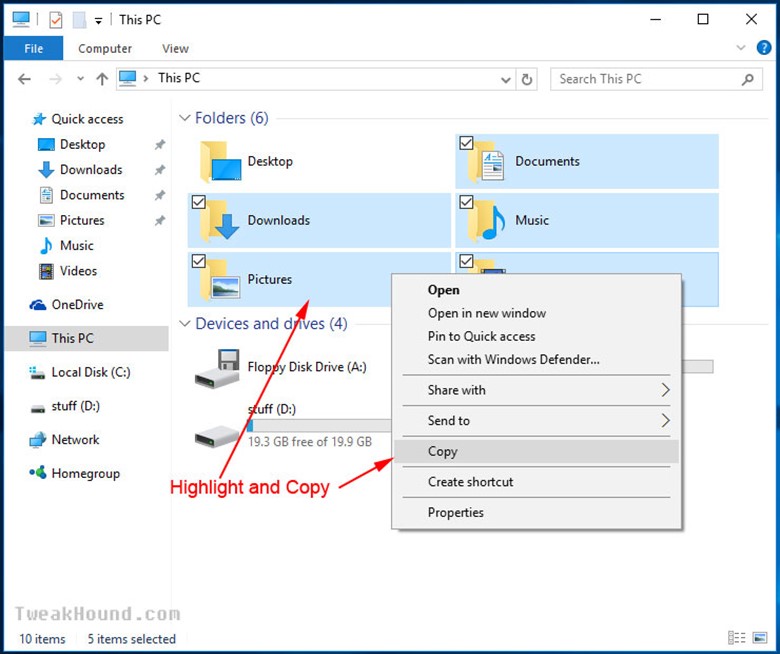
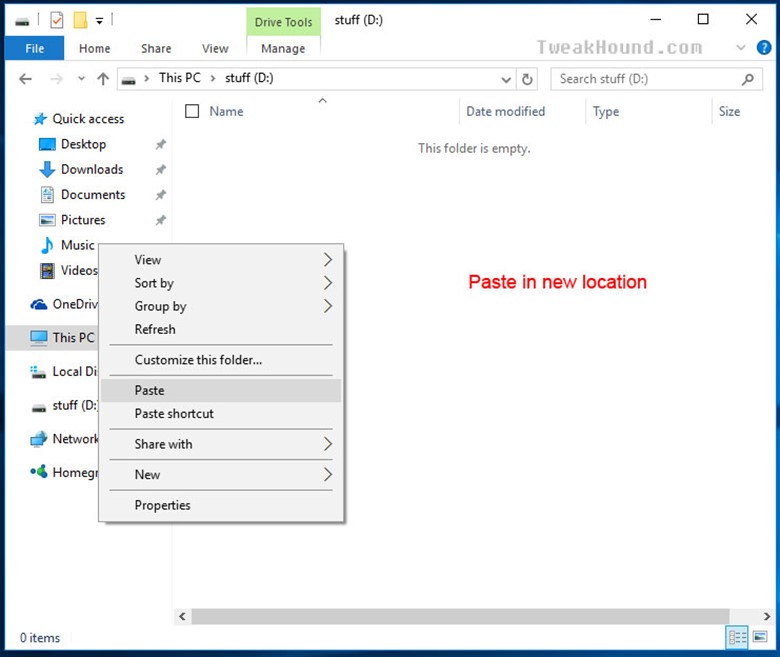
-Once you have finished copying the files. Go back to the original User Folder, right-click on each folder you moved.
-Choose Properties from the menu. In the resulting window, click on the Location tab, and then the Move… button.
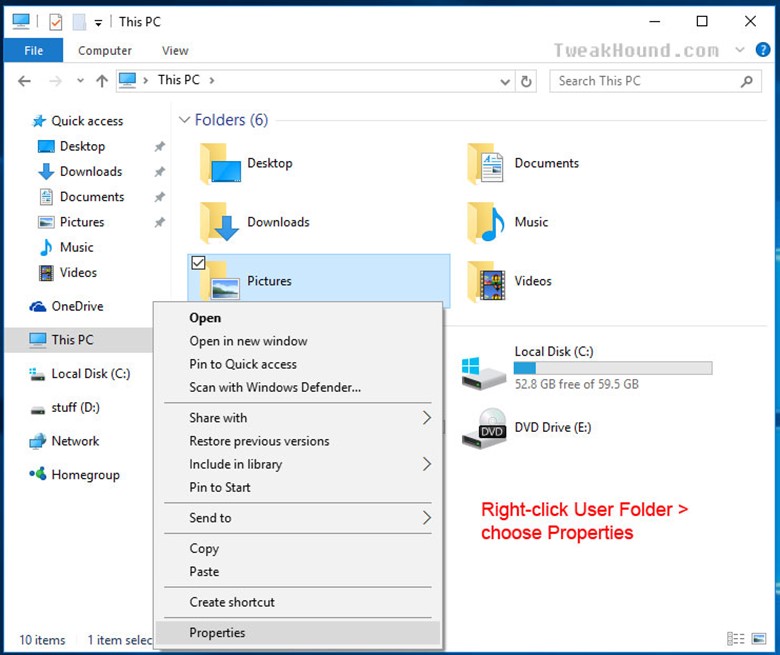
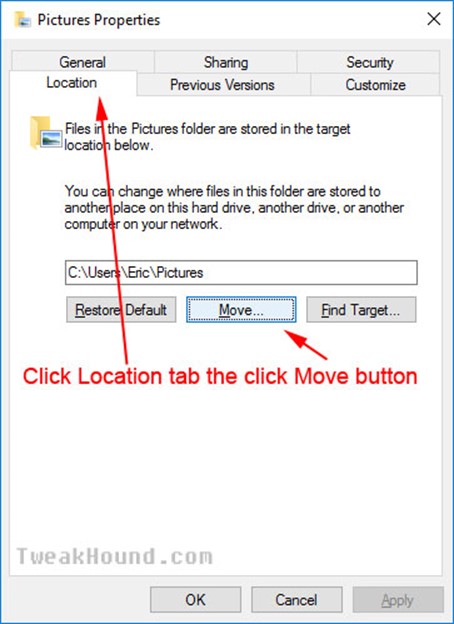
-Browse to the location you copied the files to.
-Click once on the folder you want it moved to and then click the Select Folder button (bottom right of the screen).
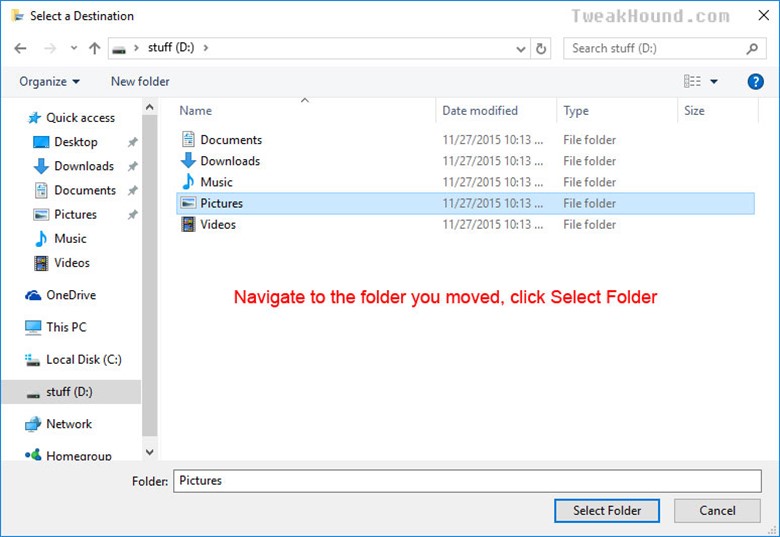
When you copied/pasted your folders the stuff in then moved to. Still, I would click Yes to be sure
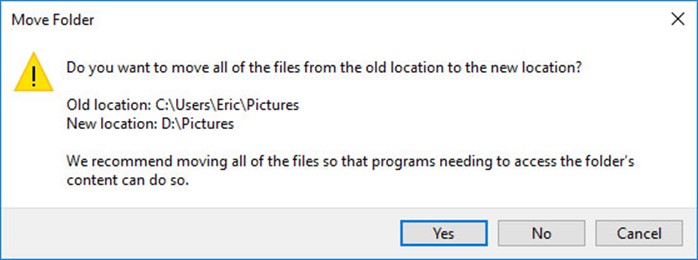
Repeat this section for each folder you moved.
Adding A Folder To A Library
You can add any Folder to your Library. However, these DO NOT show in your User Folders only in your Libraries. I will show you how to add your Libraries back to Windows Explorer in the next section.
Simply right-click on the folder you wish to add to the Library > choose Include in library > choose the Library.
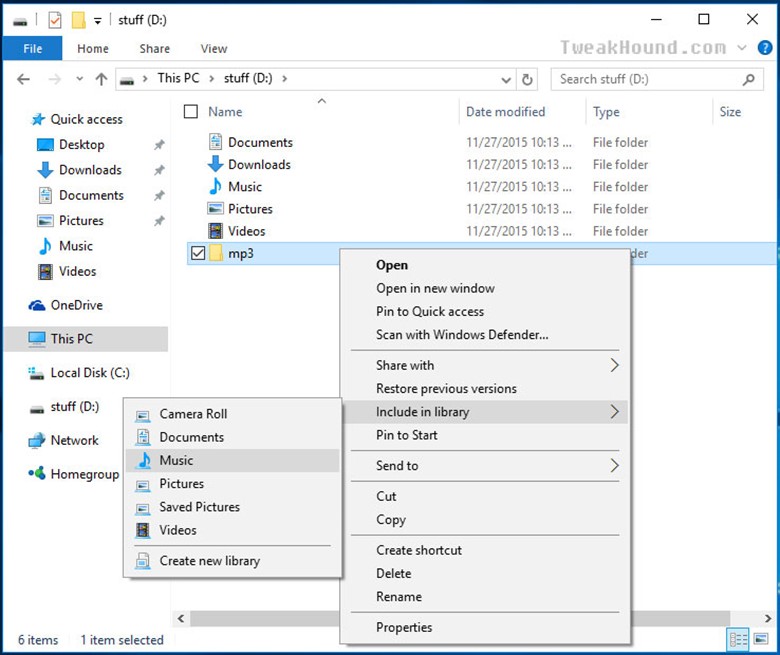
Show Libraries In Windows Explorer
In Windows Explorer go to Navigation pane > choose Show Libraries or Show all folders.
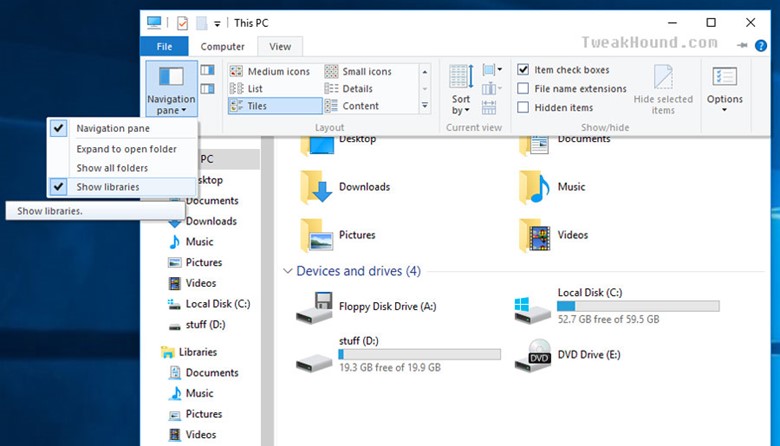

I think Classic Shell is far superior to anything out there and free.
Hi Eric,
Excellent job. I will have to re-read the whole thing again… My favorite is moving all the DOCS, Pix and Misc. to a separate drive. In this way, I can do more frequent OS backups that will not fill the backup drive too fast.
Issues on my end:
1. When I try to change Geolocation Service to AUTOMATIC, I get “the system cannot find the file specified”. Any suggestions?
2. On your tweaks p. 13, you have more options. On Shutdown settings, I only have SLEEP and LOCK. You additionally have: Turn on fast startup and Hibernate. Are you running Win 10 Enterprise?
Suggestion: It would be great to compile everything into a PDF file that can serve as desktop reference.
Geolocation: https://technet.microsoft.com/en-us/windows/dn764773.aspx?f=255&MSPPError=-2147217396
Shutdown settings may vary depending on setup.
PDF: https://www.tweakhound.com/buy-tweaking-windows-10/
This is funny and just for a point of reference I have worked in IT primarily in Computer and Network installation, support, maintenance for 21 years now and have read Eric’s guides since Windows XP as it is one of the easiest ways to get great info on the manipulation of Operating systems and he is about as complete as it gets.
Anyway the way I organize my files is on seperate hard drives internally and with USB media containers most often now (I have 2 64 Gb’s I use and on 256 GB one as well given to me by Corsair. My computer is set up with 3 hard drives (which I would like to grow to 5 with two or 7 in raid sets in 0,1 and 10 (0,1 being options with 5 and 10 being with 7). The first of course is the OS drive otherwise generally known as C:\ and the other two are P:\ programs, and M:\Media which I organize relatively often and I have backups and everything of course external from the OS drive which is also a Corsair Pro SSD and the things on it are often used, and active programs such as Office etcetera but not generally big saves (I like to keep SSD’s relatively light in volume)!
Two things…
1) Excellent job Eric! One thing I miss is the Logoff, Shutdown, and Restart tiles to which I pin to my taskbar…But hey that’s just me..
2) Might as well make it a sixer…LOL
Excellent work! This really takes all the “mystery” out of running and securing this OS…at least for me. A quick “typo” to correct. On page 3, when copying the GOD MODE title, the space between the period after the word MODE, and the first parentheses has to be removed for it to work.
Thank you again for all your hard work!
Fixed. Thanks!
Defragment and optimize your drives bug
There is a bug in Win 10, V 1511 build 10586.17 setting for “defragment and optimize your drives”. If I turn my HDD defrag schedule to ON, my SSD gets switched on too. If I turn OFF SSD defrag, HDD defrag is also turned off. I have defrag for all drives turned off turned OFF and will do it manually.
I have 8Gs of RAM on a 32bit Windows with SSD on a laptop and it boots twice as fast (average 30 sec.) as Windows 10 32 or 64bit (1 min. +) – and Windows 32 bit can only use 4Gs of RAM max.!
Same programs and all drivers all up to date on both so go figure!
https://msdn.microsoft.com/en-us/library/windows/desktop/aa366778%28v=vs.85%29.aspx